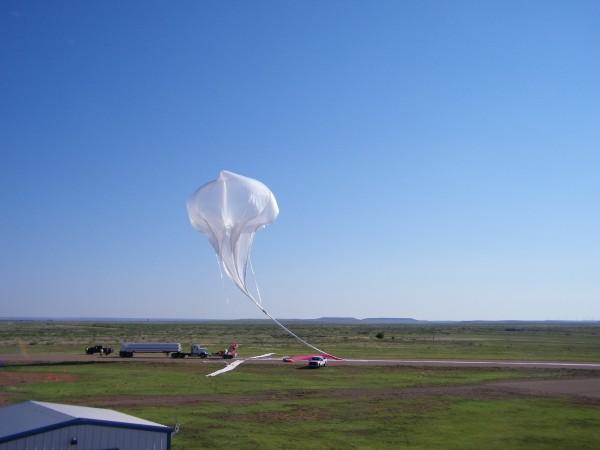
NASA launched and conducted two successful flight tests last month of their football stadium-sized balloon, called "Big 60," from Fort Sumner, New Mexico. This is first time that, in over 15 years, the space agency has conducted tests on scientific balloons. The tests were carried out on 17 and 25 August.
The balloon covers an area of about 1.7-million-cubic-metres and was lifted to a record-breaking sustainable altitude of 48 km, reports NASA. The balloon and its science payload of three ride-along experiments took about 8 hours to complete the test.
Big 60, according to the space agency, is their largest zero pressure balloon to date. It is so big, notes the report, that if the polyethylene sheeting were spread out on the ground, it would make a tarpaulin that is big enough to cover about 20 acres of land. It is this massive size that lets the balloon float to altitudes far greater than any other zero pressure balloon ever built. Currently, the report mentions that Big 60 can reach 8 km higher than any other balloon.

Apart from its impressive size, Big 60 is only half as thick as the other NASA balloons that NASA flies. At a mere 0.001016 cm or 10.16 microns thick, the plastic film that the balloon is made of is actually a bit thinner than kitchen wrap, notes the report.
Before being put in a high altitude balloons, these films are put through three stages of testing and this includes a round of quality tests at Wallops Flight Facility's Balloon Research and Development Lab. Near the edge of space, at the stratosphere, the balloon will face temperatures as low as -60 degrees C, but the plastic is rated to work at even temperatures as low as -90 degrees C in the lab.
Big 60's is still being designed and right now in its testing phase, so the test flight saw it carrying only a minimal payload- primarily support instrumentation, that includes tracking, video and telemetry tools along with some tertiary experiments to fill out the over 748 kg suspended payload.
Sarah Fischer, a technologist in the Wallops Balloon Research and Development Lab, said that Big 60 can lift a payload equivalent to a small car, but mentioned that it also had room for a few smaller missions.










